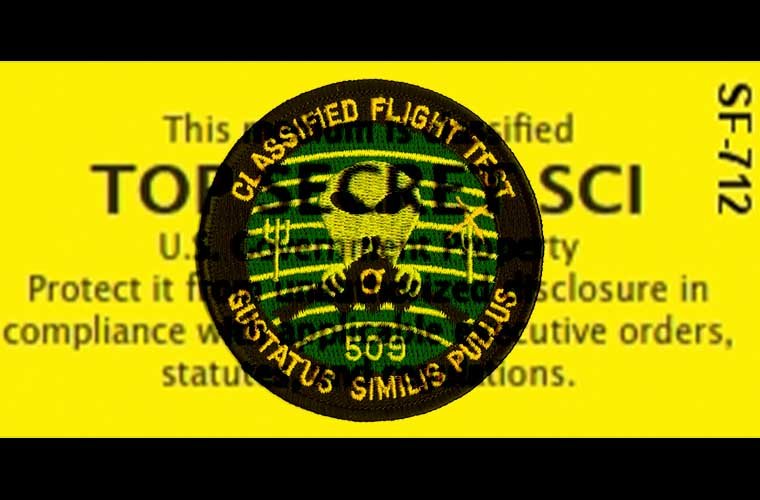If there’s one thing the military world loves, it’s iconography.
In Ancient Greece, the Athenians displayed images of an olive tree and owl on shields, armor, and banners to denote their allegiance to Athena. The Corinthians adopted the Pegasus, or winged-horse, as their national emblem.
The first known use of unit patches in the United States originated in World War I with the 81st Infantry Division, the “wildcats,” who adopted a green circle featuring a black cat as its unit insignia. Shortly afterward, General of the Armies, John Pershing, ordered all U.S. Army divisions to create and wear a patch unique to their division.
By World War II, U.S. Army Air Force pilots began creating their own uniform patches, often featuring images from their planes’ iconic nose art. Eventually, the trend spread to U.S. ground troops, giving rise to the morale patch.
Typically featuring humorous images and tongue-in-cheek expressions, the ornamental morale patch has become deeply ingrained in military culture.
Often not officially authorized, but unofficially allowed for esprit de corps, custom morale patches for individual units, divisions, brigades, programs, or agencies can be widely found throughout the military, law enforcement, and Intelligence Community.
Gaining popularity in recent times, small coins or medallions featuring similar sardonic imagery roughly equivalent to the morale patch termed “challenge coins” are frequently passed amongst the defense and national security world.
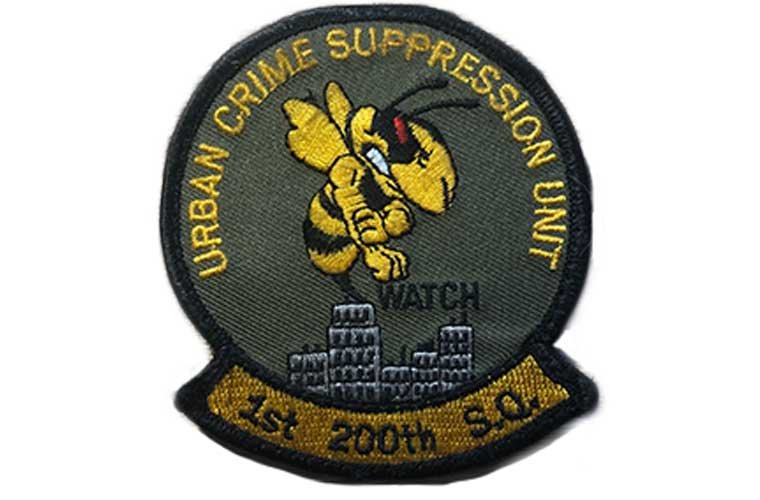

With a focus on breakthrough science and disruptive technology, The Debrief often finds itself trying to peer behind the murky curtain of Black Budget programs and secretive defense agencies.
Of course, the classified world is a reclusive one, where those in it are typically expected to keep confidences from families and friends, and in many cases, carry their secrets to the grave.
Yet, for all of its secretiveness, some of the most incredible advances in human knowledge and technology are often incubated within the mysterious world of Black Budget programs, which is precisely why The Debrief, respectfully, pursues this shadowy realm.
In addition to remarkable technologies such as quantum electronic warfare, “living materials,” robotic combat vehicles, laser weapons, and stealth aircraft, the classified world tends to have some of the most intriguing unofficial iconographies.
These custom insignias of the classified world often contain dark humor and secret symbolism, a tip-of-the-hat to the enigmatic realm they are born.
So without further ado, The Debrief now takes a look at 9 of the most mysterious emblems we’ve come across from within the classified world. Of course, unsurprisingly, no one can confirm or deny these – not classified, but unofficially accepted as not meant for public viewing – insignias even exist.
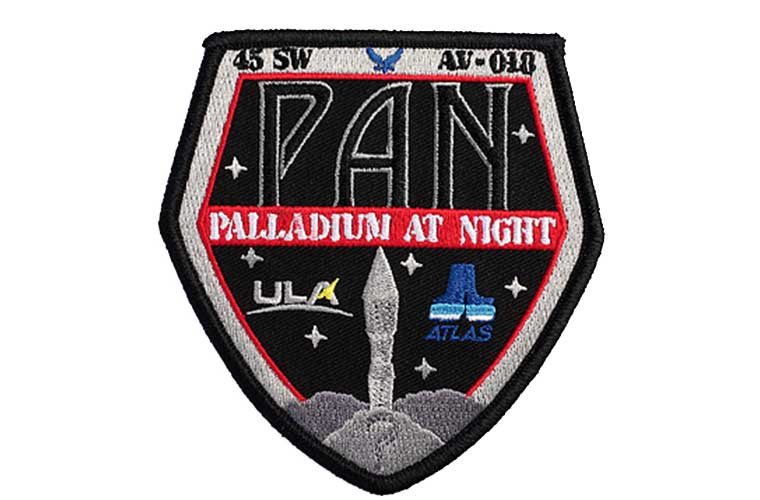

The National Reconnaissance Office’s Palladium At Night
What makes this first morale patch so interesting is the many mysteries surrounding the program it represents.
The patch originates from PAN (USA-207), a classified U.S. Government signals intelligence satellite launched on September 8, 2009. Since its launch, no U.S. agency has claimed ownership of the satellite. A highly unusual move, considering the NRO typically has no problem announcing launches of its intelligence-gathering spacecraft.
“45 S.W.” at the top of the PAN patch refers to the 45th Space Wing at Patrick Air Force Base, the U.S.’s space launch wing. “AV-018” represents the Atlas V 401 rocket that carried the satellite into orbit, with “018” being the rocket’s serial number.
While virtually nothing has ever been officially discussed about the satellite, Top Secret documents leaked by former NSA contractor Edward Snowden revealed PAN was part of the National Security Agency’s (NSA) NEMESIS program. According to leaked documents, NEMESIS is a foreign satellite intelligence program that targets and captures satellite uplinks on targeted foreign spacecraft.
Amateur satellite watchers have noted PAN has a unique history of frequently relocating and moving between different Middle East positions.
Initially, the PAN acronym was rumored to stand for “Pick A Name,” suggesting the satellite’s owners couldn’t decide on a name and went with PAN in jest. However, when the mission patch leaked out, it was revealed PAN stood for “Palladium At Night.” This detail adds an interesting twist to the PAN satellite.
In 2019, the defense news site, The War Zone, revealed the Navy had been quietly working on a new type of electronic warfare ecosystem called: Netted Emulation of Multi-Element Signature against Integrated Sensors. The acronym and referenced name for the Navy program: NEMESIS.
The War Zone reported that one of the Navy’s NEMESIS capabilities is the ability to use drone swarms to project false targets into targeted electrical sensors.
The ability to project false objects into sophisticated surveillance systems led some to wonder if NEMESIS could be behind the Navy’s reported sightings, which has reached a fever pitch after three videos showing “unidentified aerial phenomena” were released in late 2017.
According to the Snowden leaks, the NSA and Navy’s NEMESIS describe two completely different programs and technologies. Meaning the connections between the Navy, NSA, NEMESIS, PAN (USA-207), and possibly UFOs are all just a big coincidence. That said, there happens to be another link between all of the aforementioned things.
In the 1960s, the CIA was designing the A-12 Blackbird to replace the U-2 spy plane. One of the critical details designers needed to know was Soviet Union’s radar capabilities, particularly the P-14 “Tall King” radar system.
To find out just how good the USSR’s Tall King was, the CIA’s Directorate of Science and Technology office launched an audacious program that ultimately developed means of electronically generating and interjecting false targets or “ghost aircraft” into Soviet radars. The program is the forebearer of the highly sophisticated NEMESIS program designed by the Navy decades later.
The kicker here is the codename for the CIA’s 1960’s electronic warfare system…
Project PALLADIUM.


The Classified World’s Unspoken Motto – “Don’t Ask”
Featuring a shackled grey alien with “Alien Technology Exploitation Division” scrolled across the top, artist, and author Trevor Paglen is credited with finding this next intriguing morale patch.
Paglen, who authored a book on the emblems of top-secret military and intelligence projects – I could Tell You But Then You Would Have to Be Destroyed By Me: Emblems From the Pentagon’s Black World – discussed hearing about this alien-theme patch from one of his sources during an appearance on The Colbert Report. After seeing him on Colbert, Paglen says the patch’s creator, Robert Fabian, reached out and gave him one for his collection.
According to Paglen, Fabian said he’d created the patch for him and his colleagues while working in a special access program (SAP) at Peterson Air Force Base, home of the North American Aerospace Defense Command (NORAD), the Space Force 21st Space Wing, and U.S Northern Command, in Colorado.
It’s unknown which classified project the patch was created for, but Fabian says it was meant as a joke because of the program’s extreme secrecy, including employees having to work from a Sensitive Compartmented Information Facility (SCIF).
Based on the image of a chained alien and “Alien Technology Exploitation” reference, we can assume the idea the government might be hoarding recovered alien technology in uber-secrecy, is at minimum, humorously discussed within the classified world.
The words at the bottom: “YltlhoboQo’ Ja'” are Klingon for “Don’t ask.”
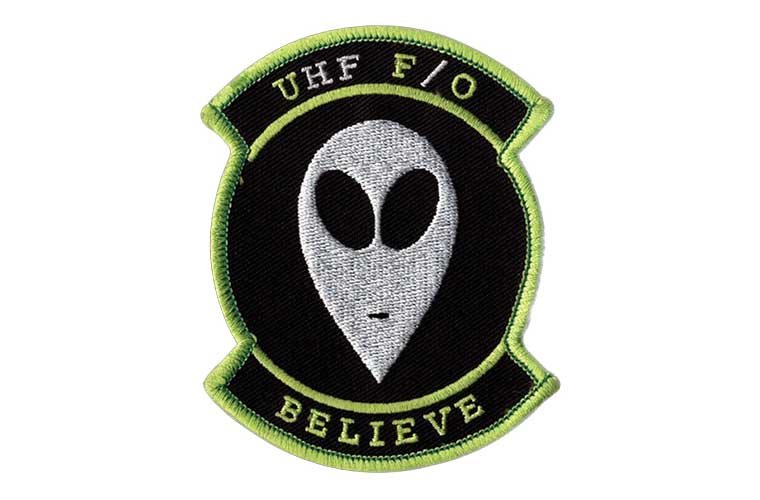

The Navy’s Other UFO Program
In another alien theme, this morale patch comes from the Navy’s Ultra-High Frequency Follow-On program.
With the stereotypical grey alien head and “Believe” stitched at the bottom, there’s no ambiguity that this morale patch is supposed to invoke images of extraterrestrials and the popular TV show, The X-Files.
So what exactly is the Navy up to with this ultra-high frequency program? Flying reverse-engineered alien spacecraft? Colluding with an non-human species? Secretly controlling the E.T. reality and preventing the public from knowing the truth about UFOs?
According to the Department of Defense, none of the above.
In the DoD Dictionary of Military and Associated Terms, the official acronym for ultrahigh-frequency follow-on is UFO. Hence, at the top of the patch, the letters UFO in UHF F/O are highlighted in lime green.
Given the acronym’s much more well-known association with “unidentified flying objects,” creators seem to have taken the whole alien theme and ran with it when they designed the patch.
So while they have acknowledged encounters with “Unidentified Aerial Phenomena” or UAP, in this particular instance, the Navy’s UFO Program involves a fleet of eleven satellites that provide secure communications for airborne, ship, submarine, and ground forces across the globe. The fleet of spacecraft are controlled by the Naval Satellite Operations Center (NAVSOC) located at Naval Base Ventura County in California.
Since the DoD has acknowledged they have an Unidentified Aerial Phenomena Task Force, which the Office of Naval Intelligence is running, The Debrief couldn’t help asking if the Navy’s more exciting UFO program happened to have a morale patch of its own. According to sources familiar with the program, not yet.
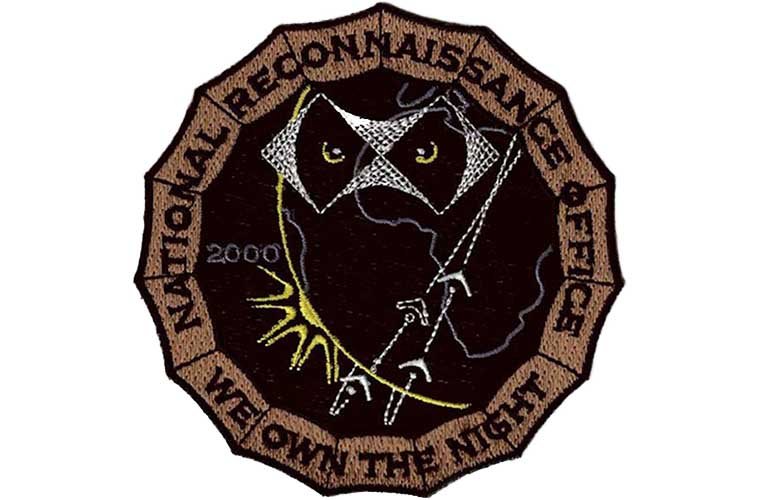

When the NRO’s Secret Trolling Backfired
Typically, the only way the public gets a chance to catch a glimpse of the classified world’s insignia is when a morale patch leaks or ends up getting sold on eBay.
The National Reconnaissance Office (NRO), on the other hand, is quite proud of their mission logos, openly publishing them with satellite launch announcements. The NRO also happens to be known for having some of the most outlandish and bizarre morale patches, steeped with hidden messages.
With this particular patch, used for a spy satellite launched from Vandenberg Air Force Base in August of 2000, NROL-11, the agency’s artistic trolling, backfired on them.
NROL-11’s mission patch depicts what appear to be owl eyes peering down at the earth, with four arrow-shaped vectors crossing the African continent. Three of the vectors are white, while one is darkened out. As the Smithsonian points out, this seemingly minute detail was enough for civilian satellite watcher, Ted Molczan, to hypothesize NROL-11 would be taking the place of a failed satellite. After launch, Molczan took a peek, and sure enough, a new satellite appeared exactly where he predicted NROL-11 would be.
In their attempt mischievous inside-humor, the NRO inadvertently dimed out the location of their latest classified satellite.
Now, if their mission patch spilling the beans was upsetting, the NRO certainly hasn’t let on.
The secretive agency, which the U.S. government didn’t officially acknowledge until 1995, has gone on to release nearly 50 other patches for their various satellite missions since the NROL-11 debacle. In fact, the NRO’s mission patches have only gotten more extravagant and ridiculous, featuring themes such as lizards riding on rockets to mythical sword-swinging winged-warriors.
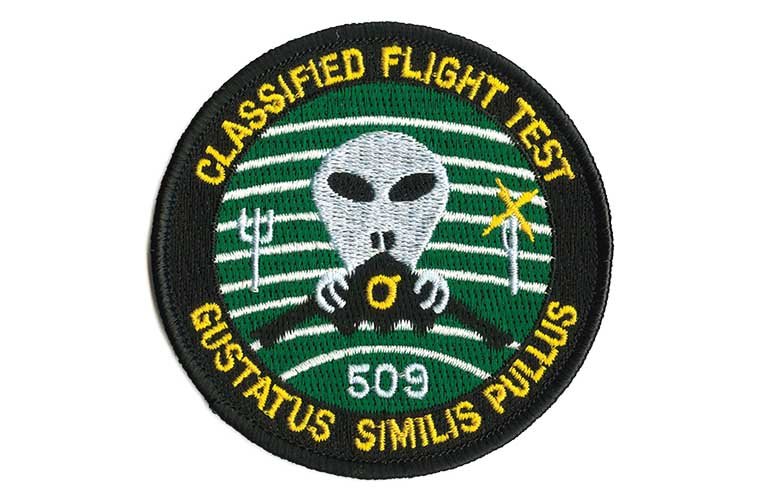

Is the 509th Trying to subtly Reveal It Recovered Alien Technology in 1947?
This next morale patch comes from the 509th Bomber Wing at Whiteman Air Force Base in Missouri, commemorating the flight test of the B-2 “Spirit” stealth bomber.
You’ll notice there is a trend of using alien themes in the morale patches of Black Budget aerospace programs. In this instance, there are some intriguing E.T. ties and hidden messages in the 509th’s patch.
Before moving to Whiteman Air Force Base, the 509th Operations Group was the host unit at Roswell Army Airfield in Roswell, New Mexico. In case you don’t see where this is going, indeed, on July 8, 1947, it was the 509th Operations Group that announced they had recovered a crashed “flying disc” from a ranch near Roswell.
Given the incredible lore that still surrounds the alleged Roswell UFO crash, the more subtle symbolism in the 509th’s B-2 test patch happens to be the most intriguing.
Some have said that the objects to the right and left of the alien figure are a fork and knife. Eating utensils might make sense for reasons we’ll explain in a moment. However, others familiar with the B-2 Stealth Bomber program tell The Debrief those objects represent radar-arrays. The lines in the background being radar waves symbolically trying to intercept enemy aircraft.
Rather than “eating” the B-2 in the patch, the alien figure is supposedly cloaking the plane, meant to suggest the long-range bomber’s stealth abilities have an extraterrestrial origin.
The Greek letter sigma on the B-2 is a prevalent symbol used in insignia related to stealth programs. The reason being, the symbol “sigma naught” is the technical term used to calculate the normalized radar cross-section or backscatter coefficient of an aircraft.
The dog-Latin phrase Gustavus Similis Pullus translates as “Tastes like chicken.” Hence, why the fork and knife symbols, rather than the radar antenna arrays, might make sense. The reason designers included this phrase on the 509th’s morale patch is unknown. Undoubtedly, the saying is linked to some inside-joke amongst the 509th B-2 flight test team.
The image shared here is the original morale patch commemorating the B-2 flight test. However, the patch was updated with the phrase, “Classified Flight Test,” then replaced with “To Serve Man.” According to Paglen, the change was prompted by Air Force brass being less-than-pleased with so blatantly advertising classified material.
The phrase “To Serve Man” references the 1959 Twilight Zone episode by the same name, in which the plot involves a race of aliens landing on Earth to harvest the unwitting human population as a food source. Since the phrase came after, it’s unknown whether the Twilight Zone reference is meant to complement or add irony to the whole alien theme and “taste like chicken.”
The 509th’s B-2 patch is arguably the most fun emblem on The Debrief’s list. Is this insignia from the classified world merely trolling outsiders like the Navy’s UHF F/O morale patch? Or is it hinting at real highly-classified information like NROL-11?
Ultimately, it’s unknown, but certainly, the truth is out there. Somewhere.
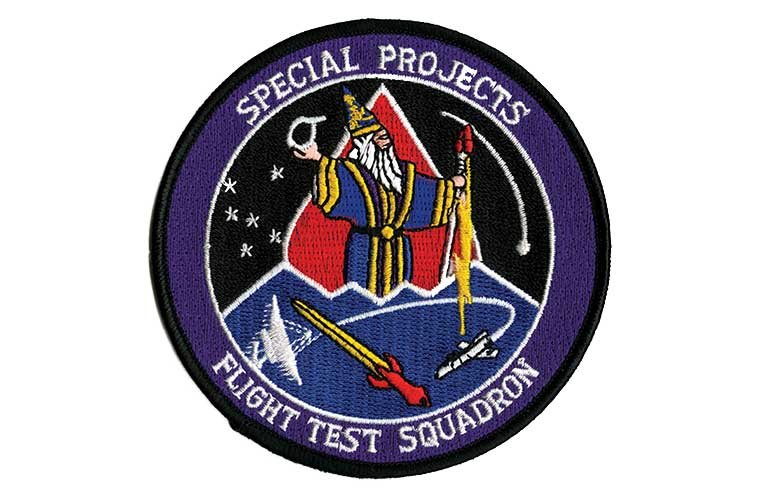

Hidden Messages of the Classified World
This patch comes from the Air Force’s Special Projects Flight Test Squadron and is believed to have originated during the design and testing of Boeing’s never-fully developed “Bird of Prey” stealth aircraft. With this patch we get to see numerous themes frequently used in the classified world’s iconography.
The wizard featured prominently on this patch is a fixture in the world of Black Budget aerospace programs. Some will refer to veterans who worked in the CIA’s Directorate of Science and Technology Office on the U-2 and SR-71 spy planes as the “Wizards of Langley.” In the wizard’s hand, we have the Greek letter sigma, again a reference to stealth technology.
The six stars on the patch are frequently used in insignias from the classified world. The five stars grouped, with one separated from the rest, signify 5+1, or Area 51.
The falling ball that looks almost like a meteor on the patch’s right represents the radar calibration spheres that are dropped from the sky to test and calibrate radar systems.
The lightning bolts are also frequently seen in official insignia and unofficial morale patches. Typically they represent speed, communications, rapid dominance, and signals intelligence. Given all the other images, the bolt directed at the aircraft on this patch’s bottom right possibly is meant to represent electronic warfare.


In The Classified World Symbols Can Share or Hide Secret Projects
This next morale patch is interesting because it has several more symbols frequently used with insignias of the classified world.
The patch reportedly comes from the 416th Flight Test Squadron Special Projects Flight based at Edwards Air Force Base in California.
The 416th Flight Test Squadron operates and conducts flight testing on advanced technologies for the F-16 fighter jet. At times, the 416th is also used as “chase planes” to perform airborne observations of other prototype or under-development aircraft. What precisely the 416th’s “special projects” unit does is anyone’s guess.
Dragons are found throughout the insignias of the classified world. What makes its inclusion unique in the 416th’s patch is the dragon theme is typically used for spy satellite programs. The NRO has featured a dragon with outstretched wings blanketing a globe, representing a satellite’s global coverage, in several of their mission patches.
Use of the mythical-winged dragon as a symbol for secret signals intelligence programs can be traced to the retired top-secret codeword “DRAGON,” which was part of the now-defunct BYEMAN sensitive compartmented information control system for overhead surveillance systems. Hence, one of the reasons “Dragon Lady” was adopted as the official nickname for the U-2 spy plane.
Again with the dual lightning bolts typically representing communication, speed, and signals intelligence.
The Latin phrase “Procul Este Profane” is associated with Virgil’s epic poem The Aeneid. When Apollo arrives at the Temple of Apollo before he can descend into Hades, the prophet Sibyl says, Procul, O procul este profant,” translating to, “keep away, oh keep far away, you profane ones.”
According to Paglen, members of the 416th Flight Test Squadron Special Projects Flight unit translate this Latin phrase: “Keep your distance, you who are uninitiated.”
The origin story for this morale patch is unknown. However, considering the Black Budget world’s love affair with using symbols to convey hidden messages, one can speculate on its meaning.
With the dragon representing spy satellites, peering out of the darkened clouds, and lightning bolts representing signals intelligence, this morale patch may originate from a classified reconnaissance program using overhead surveillance spacecraft that gather measurement and signals intelligence (MASINT) on foreign aircraft.
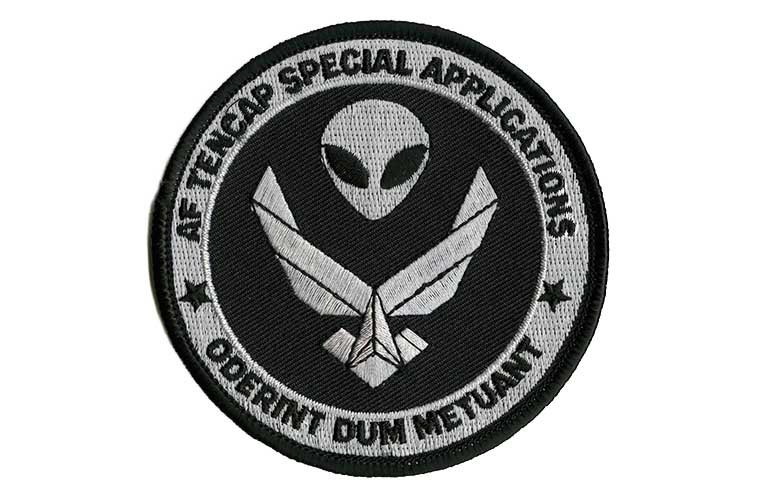

The Classified World really Loves Aliens
For being so tight-lipped on the subject, the U.S. Government sure doesn’t seem to try very hard to distance itself from the rumors of hidden knowledge of UFOs and harboring secret alien technology.
This next alien theme morale patch comes from the Air Force’s Tactical Exploitation of National Capabilities Program (CAP).
According to budget documents, TENCAP “exploits existing air, space, cyber, national and global ISR, and Non-Traditional ISR (NTISR) for operational and tactical applications by rapidly prototyping and providing capability demonstrations.” TENCAP is responsible for keeping abreast and influencing the design of future space systems for tactical applications.
TENCAP was formally part of the Air Force’s Space Innovation & Development Center and U.S. Air Force Warfare Center, headquartered at Nellis Air Force Base in Nevada. The program’s current status isn’t entirely known. However, it’s most likely that TENCAP, or some iteration of it, now falls under the control of the newly formed Space Force.
At least three known classified programs recently run by CAP are:
- TALON SPITBALL: Cage 8 jam-resistant antenna for next-generation aircraft developed by Ball Aerospace.
- TALON PIKE: A counter-unmanned aerial systems program developed at Sandia National Laboratories. Possibly, the Mobile Adaptive/Reactive Counter Unmanned System, or MARCUS project.
- TALON TACMOR: A classified technology prototype to expand air domain awareness and maritime domain awareness over the Western Pacific region run by BAE Systems of Australia.
The role of TENCAP’s “Special Applications” unit referenced in this morale patch is unknown. The term “Special” is invariably associated with highly-classified programs. According to the New York Times, TENCAP members created this particular morale patch for a secret Air Force program that mines spy satellite imagery for battlefield intelligence.
The Latin at the bottom of the patch, “Oderint Dum Metuant,” ominously translates to “Let them hate, so long as they fear.” The phrase is usually associated with the Roman emperor Caligula, whose name has become synonymous with madness and tyranny.
Now, why they’d include an alien head and a Caligula quote in their insignia is a great mystery. Undoubtedly, it’s another ironic play on government secrecy and UFOs.
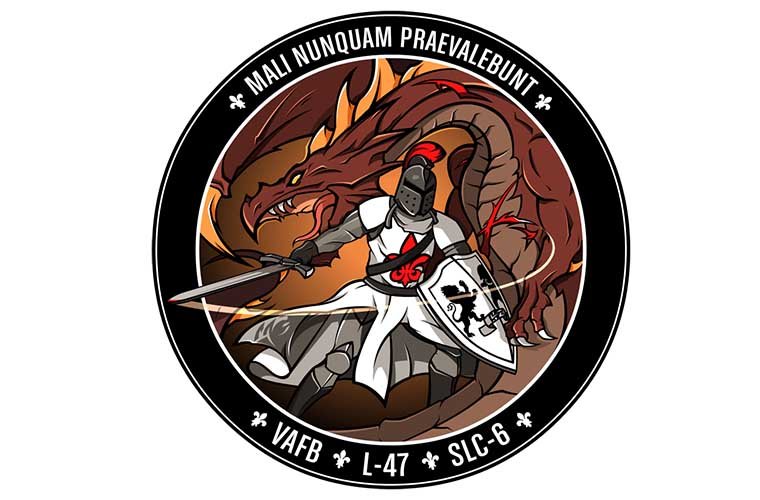

NRO The Dragon Slayer?
This last insignia comes from the mission patch of NRO spy satellite NROL-47, launched on January 12, 2018.
According to reports, NROL-47 is believed to be a Future Imagery Architecture (FIA) synthetic aperture radar (SAR) satellite. Orbiting the earth retrograde – or “backward”- NROL-47 is supposedly used to collect day-and-night, all-weather imagery.
Because of the highly secretive nature of the NRO and its missions, it’s virtually impossible to know what any one of their spy satellites’ true purposes are for those uninitiated to a program.
Amateur analysts believe that NROL-47 is a SAR reconnaissance program based on several very obvious features. The launch site (Vandenberg Air Force Base), launch window, ascent path, and launch vehicle (the Delta IV rocket), indeed, all point to NROL-47 being a SAR spy satellite. However, because of these almost too easily recognizable characteristics, this might actually mean NROL-47 is anything but a SAR satellite.
While NROL-47 may indeed be a synthetic aperture radar-based imagery satellite, the mission patch’s symbols point to a possibly different, more secretive mission.
As previously mentioned, the dragon is typically used to symbolize signals intelligence satellites. Unlike other instances of use, where the dragon is seen dominating the scene, the prominent theme of NROL-47’s mission patch is a medieval knight fighting and slashing a dragon.
Traditionally, the knight symbol signifies special operations and the ability to influence all types of warfare. With the knight fighting a dragon in this NRO patch, the iconography suggests, rather than a radar-imaging satellite, NROL-47 is some type of counterintelligence or anti-satellite program.
The Latin phrase, “Mali Nunquam Praevalebunt,” means “Evil will never prevail,” which the NRO says represents the agency’s commitment to national security.
NROL-47 could be a sophisticated, top-secret slayer of enemy satellites. Or the mission patch’s creator could just be a huge fan of medieval fantasy. Like everything else in the world of Black Programs, the truth remains elusive.
Of course, when it comes to the insignias of the classified world, creating mystery and an aura of intriguing subliminal messaging is precisely the goal in mind.
Tim McMillan is a retired law enforcement executive, investigative reporter and co-founder of The Debrief. His writing covers defense, national security, and the Intelligence Community. You can follow Tim on Twitter: @LtTimMcMillan. Tim can also be reached by email: tim@thedebrief.org or through encrypted email: LtTimMcMillan@protonmail.com.
